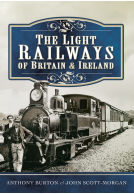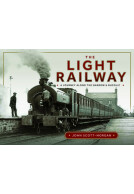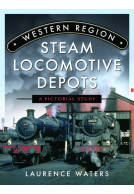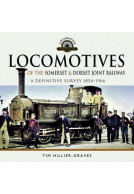The Hayling Island Branch (Hardback)
The Hayling Billy
Imprint: Pen & Sword Transport
Series: Branch Line Profiles
Pages: 176
Illustrations: 150
ISBN: 9781526726810
Published: 19th August 2019
(click here for international delivery rates)
Need a currency converter? Check XE.com for live rates
| Other formats available - Buy the Hardback and get the eBook for free! | Price |
|---|---|
| The Hayling Island Branch ePub (56.4 MB) Add to Basket | £8.99 |
The Hayling Island Branch was one of Britain's most iconic sea side lines, connecting Havant with Hayling Island via Langston Harbour. Opening in 1865 for freight and 1867 to passenger traffic, it was after a few years of local control, managed and operated as part of the London Brighton & South Coast Railway, who were responsible for its upkeep until the railway grouping in 1923, when it became a part of the Southern Railway. The railway had a colourful and bucolic existence, with trains headed by the attractive Stroudley Terrier class tank locomotives and a collection of vintage carriage stock. In 1948 the branch became part of the Southern Region of British Railways, carrying on as a local and at times heavily used branch line, until its closure in November 1963. Today the lines track bed is a walking path from end to end, with only the former goods shed at Hayling Island to show the visitor any tangible evidence of the railways existence.
As featured by
Tenterden Terrier, March 2020
As featured by
Railway Modeller, February 2020
As featured in
Branch Lines and Light Railway Publication
A well-illustrated work concentrating mainly on the BR period (including much in colour), but with a nice selection of period views from the LBSC and Southern Railway eras.
West Somerset Railway Society
Another book of great interest for those lovers of the railway in times past and who like stories based on real facts.
Miniaturas JM
Read the full Spanish review here
An interesting and nostalgia-inducing book. Recommended.
Ffestiniog Railway Magazine
This is an excellent title and well researched by its author.
Vintage Spirit, January 2020 – reviewed by Ken Rimell
"If you’re lucky enough to remember the line this book will bring waves of nostalgia; if not you’ll see what a gem you missed."
Society of Model & Experimental Engineers
"If you’re lucky enough to remember the line this book will bring waves of nostalgia; if not you’ll see what a gem you missed."
Society of Model & Experimental Engineers
Reviewed by
Push this book in your rucksack as a guide when you head south to pay homage to the old 'Hayling Billy', which is now a popular footpath and cycle way.
Steam World, November 2019
An impressive compendium of informatively captioned black & white photos, as well as a concluding and major section of full color photos, "The Hayling Island Branch: The Hayling Billy" is the latest addition to the outstanding Pen & Sword Books series 'Branch Line Profiles' and is unreservedly recommended for personal, professional, community, college, and university library collections on the history of British railroads.
Midwest Book Review
Read the full review here
New historical information on the Hayling Island branch, one of Britain's most iconic seaside lines.
Bookseller Buyers Guide
About John Scott-Morgan
John Scott-Morgan has been writing about light railways for forty five years, he has written some of the definitive books on light railway subjects, including about the Colonel Stephens group of lines.
This volume covers the East Kent Railway, a line that was meant to open up the Kent Coal Field, which did not come up to the expectations of the promoters and investors.
John Scott-Morgan has written thirty eight books on railways over the last half a century, covering subjects as diverse as first generation diesel traction and main line subjects, such as the London Transport Red Panniers and Branch Lines in Kent, however its light railways that the author often returns to, as this is one of his main areas of research.
He lives in Woking in Surrey, where he continues with his writing and railway historical studies.



















